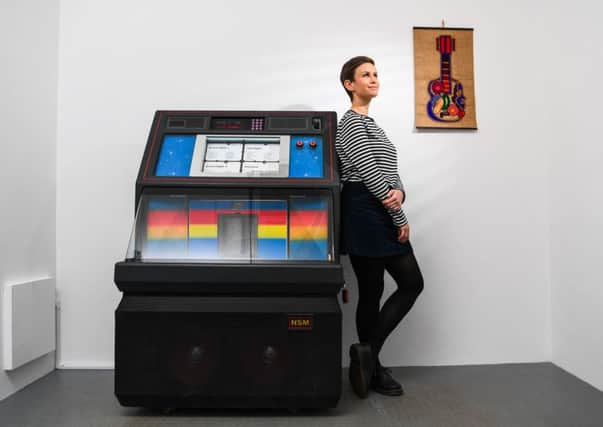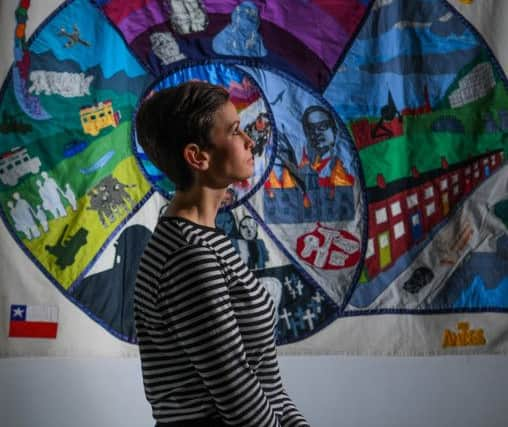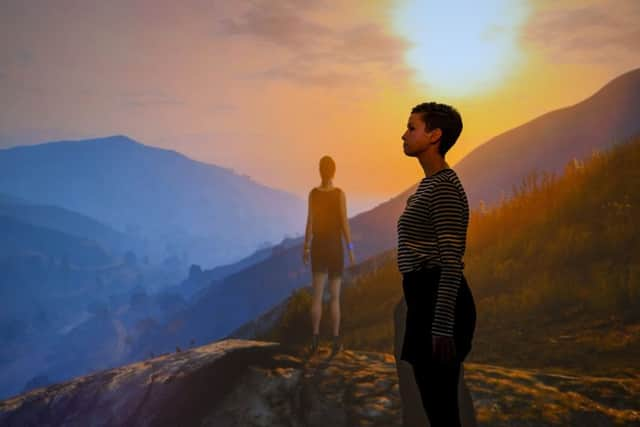From Donald Trump to animal rights - the jukebox which only plays protest songs


The jukebox standing in the first room of the Yorkshire Sculpture Park’s Bothy Gallery looks like any other. In fact, stand close enough and you might just get a whiff of cigarettes still lingering from those days when pubs still positively encouraged smoking. But this one is a little different. For a start the tracks are arranged under subject headings such as work, unions, peace and animal rights and every single song on there is calling for some social change or other.
There are a few familiar names like The Smiths, Lou Reed and the Manic Street Preachers – even Olivia Newton John is there – but there are others like Cattle Decapitation and Absinthe Revolution who are unlikely to ever trouble the playlists of mainstream radio.
Advertisement
Hide AdAdvertisement
Hide AdAppropriately titled A Jukebox of People Trying to Change the World, it was first unveiled by Ruth Ewan in 2003, but with the world still largely broken it has kept on going and in its latest home at the sculpture park there have been a few new additions.


“There are now a couple of dozen anti-Trump songs,” says curator Helen Pheby, flicking through the song listings to Nasty Man by Joan Baez and Rocky Mountain Mike’s Mr Tangerine Man. “When we decided to stage an exhibition looking at how artists and musicians have often been at the forefront of the protest movement and how they so often give a voice to the unheard then quite early on I knew that I wanted to have something for people to listen to not just look at.
“I first saw Ruth’s jukebox in the Tate and instantly I thought it was just wonderful. There is something really nice about walking into a gallery and being able to interact with a piece like this. I hope it really sets the scene for the rest of the exhibits.”
The idea for Revolt and Revolutions, which is drawn primarily from work from the Art Council, was born a couple of years ago when Helen curated an exhibition on that most recognisable of Yorkshire artists, Henry Moore.
Advertisement
Hide AdAdvertisement
Hide AdWhile the popularity of his large-scale, abstract work made the Castleford-born sculptor part of the artistic establishment, Pheby discovered that Moore was in fact a radical who was politically active from an early age. “He served in the First World War, but was invalided out having inhaled mustard gas during the Battle of Cambrai. The experience comes through much of his early work, but what I hadn’t realised was that Moore was also a co-founder of CND along with fellow Yorkshireman Herbert Read.


“The movement itself was inspired by an article in the New Statesman by Bradford-born JB Priestley under the headline ‘Britain and the nuclear bombs’. With this year marking the 60th anniversary of CND and given the current state of the world, it seemed that the stars were aligning and that this was the right time to stage an exhibition like this.”
Moore’s Helmet Head No 3 (1960) sits at the centre of the main exhibition space, but it is surrounded by more recent works. On one wall there is Peter Kennard’s take on Constable’s The Hay Wain. That famous image of a rural, chocolate box idyll has been rendered in black and white and in the middle three nuclear warheads have been inserted into the scene.
Next to it is Andrew Logan’s Homage to the New Wave, a giant mirrored safety pin which became a symbol of the punk movement, and opposite is a banner telling the story of those who fled Chile under Pinochet’s dictatorship and made a new life in Yorkshire.
Advertisement
Hide AdAdvertisement
Hide Ad“Towards the end of last year we opened a new exhibition by the Chilean-born artist Alfredo Jaar whose work is also inspired by humanitarian issues and civil rights abuse. Through that I was introduced to some of the Chilean community in Sheffield and they have donated two works to Revolt and Revolutions,” adds Pheby.


“They arrived in South Yorkshire in the late 1970s and early 80s and actually found they had an affinity with the area’s mining communities. Both had a shared hatred of Margaret Thatcher, who was a friend and ally of Pinochet and an enemy of the trade unions. The embroidered banner we have in the exhibition looks not unlike those stitched trade union banners which became such a familiar symbol of the 1984 strike.”
While the YSP is now an established visitor attraction, when it was first founded in 1977 it attracted much opposition and had it not been for the determination and sheer bloody-mindedness of founding director Peter Murray it might never have got off the ground at all.
“This whole place is built on radical ideas. I even found out that Bretton Hall was home to the country first independent record label, which seems just a perfect fit for what we are trying to do now. During the course of the exhibition we will be running a programme of events looking at whether art can change the world and asking people what they would do to make it a better place,” says Pheby.
Advertisement
Hide AdAdvertisement
Hide Ad“That feels important, because sometimes when we look at what’s happening around us we can feel powerless, but everyone in their own small way can make a difference.”


By way of proof and perhaps most poignant of all is the final room which houses a new commission by Larry Achiampong and David Blandy. The pair spent a day interviewing Alison Drake, who since the late 1990s has been a self-styled community champion for Castleford and all-round general force of nature.
She grew up in Barnsley in the village next to Grimethorpe, where she witnessed the demise of the area’s traditional industry from the glass and brickworks to finally the mines. Now she watches as the hope of her generation is replaced by despair and loss of pride in those growing up now.
It’s her voice over which visitors to the exhibition will hear, but Alison herself has been recast as her teenage self, walking through the virtual landscape of the best selling computer game Grand Theft Auto V.
Advertisement
Hide AdAdvertisement
Hide Ad“When the pits were closed it was done so violently and I was so affected by it that my heart ached,” says Alison, who adds that the film Brassed Off, while fiction, was based very much on fact. “I remember the band leader of Grimethorpe coming to my husband in tears. There was 120 years left in that pit, but it didn’t matter, the decision had been made. People did try to commit suicide and it tore the heart out of the community.
“There had been so much pride, but so much was undermined and when that happened drugs and drink sometimes became a part of the scenario. For people like me, it’s not something that’s history, but for our children it can seem like the long and distant past, but it is still having an effect.
“When I was growing up in the 1950s and 60s we had hope. They were building new houses and we were given an education. I went from a two up two down terrace where everyone worked hard, but didn’t have very much, to being a headteacher in North Yorkshire.”
After taking early retirement, Alison moved to Castleford and realised that the place needed someone to shout up for it.
Advertisement
Hide AdAdvertisement
Hide Ad“It was the early 1990s, but the place was still on its knees from the 80s. When the Millennium came we had a new clock put on the Town Hall. It was a new chapter, there was a new Labour government and we had hope.
“Now the pollution and the smoke have gone, but if we can’t do better for our young people. We aren’t fighting hard enough.”
Revolt and Revolutions runs at the Yorkshire Sculpture Park, at West Bretton, near Wakefield, until April 15. ysp.org.uk